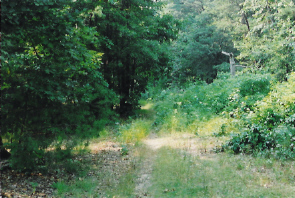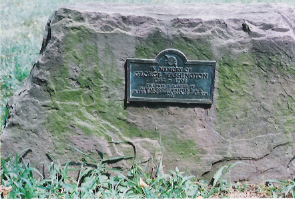FAIRFAX COUNTY, VIRGINIA

Fairfax County, Virginia,
was established in 1742 by Thomas Fairfax, Sixth Lord Fairfax, Baron of
Cameron.
In 1649, Charles the II,
the exiled King of England, granted a huge area of land between the Potomac and
Rappahannock Rivers, Northern Neck, to eight of his most loyal supporters.
By 1681 Thomas Lord
Culpepper, who was Governor of Virginia, had acquired the interest of the
others. When he died in 1689, his
holdings of about 5 million acres passed to his only daughter, Catherine. She married Thomas, Fifth Lord Fairfax. Upon their deaths the
lands passed to their son, Thomas Sixth Lord Fairfax.
Before It Was Fairfax: 

In 1732 Robert “King”
Carter died. He was the land agent for
Lord Fairfax. Carter owned 300,000 acres
and 1,000 slaves. Fairfax arranged for
his own Cousin William, to become
his land agent and got him appointed collector of customs of South Potomac,
Virginia.
At the time the land was
known as proprietaries and the Virginia
Government at Jamestown was hostile to
both proprietaries and proprietors, so in 1735, Lord Fairfax, himself, came to
settle feuds. Meanwhile, William Fairfax began to acquire land near
Mount Vernon, build a mansion, and establish an estate called Belvoir, into
which he moved in 1741.
Fairfax County was
originally called Truro Parish, after the vestry of the English Church. Much of the labor was provided by white
indentured servants and black slaves.
The Land, 1742:
When the initial settlers
of Jamestown realized there was no gold in The New World, they went after the
land through land patents, “seat and plant” within three years. Therefore, the more slaves you owned the more
land you could acquire. The other method was “the absentee landlord”, renting the land
to tenants, the forerunner of sharecropping.


When Alexandria Was
Part of Fairfax County:
In 1654, Margaret Brent
took a patent on 700 acres on The Potomac in the Great Hunting Creek Basin
which encompassed what is now downtown Alexandria.
In 1669, the colonial
government granted a patent of 6,000 acres to Robert Howsing which included Brent’s 700
acres.
*The Fairfaxes were The
First Family of Virginia.







How U.S. Route 1 Got
its Name:
One of the oldest roads in
northern Virginia was the Potomac Path.
Originally an Indian path running through the natural ridge of the
Potomac and Rappahannock Rivers beginning at the
ferry crossing on the Occoquan, it ran to Great Hunting Creek, the present site
of Alexandria. The original Truro Parish
Church of 1733 was located on this road.

Between Pohick Creek and
Accotink, a road branches off which runs closer to the Potomac. This road, not the original Indian
trail, became the Potomac Path, later U.S. Route 1, Great Neck Road, Jefferson
Davis Highway, Richmond Highway, and again Jefferson Davis
Highway in southern Virginia. Before
Interstate 95, U.S. Route 1 was the country’s longest highway, running from
Maine to Florida. The western road
running parallel to Route 1 was known as the “back road”, now Telegraph Road.

Lee Highway and Braddock Road:
There is also a road
intersecting the ridge road just below the Falls Church and running to the
river. This was the origin of Lee
Highway, named after Confederate General Robert E.
Lee. At the river the road from the
church joins the one from Hunting Creek
near the Key Bridge, named after Francis Scott Key, composer of “The Star
Spangled Banner.”
In 1748, there was a ferry
there. The road from Hunting Creek to
the juncture below Pope’s Head follows the present day pattern of Braddock
Road, named after General Edward Braddock of
The French and Indian War fame.
FAIRFAX COUNTY, VIRGINIA
Mount Vernon, Gum Springs,
Spring Bank, and Alexandria, Virginia
Mount Vernon, Gum Springs,
Spring Bank, and Alexandria, Virginia’s history is America’s history. Much has been written about historic
Virginia: Mount Vernon, Gunston Hall, Monticello,
Jamestown, and Colonial Williamsburg.
However, very little is known about the African-American communities of
Gum Springs and Spring Bank that helped to make Fairfax County the wealthiest
county in the nation and Alexandria, Virginia the famous and historic city that
it is.
Mount Vernon
George Washington’s first
ancestor in the colonies was John Washington, known as “the emigrant.” Having fled the English Civil War, he came to Virginia in 1657, and with a partner,
Nicholas Spencer, received a land grant of 5,000 acres from Lord Thomas
Culpeper. The land passed to John’s son,
Lawrence Washington, and the heirs of Nicholas Spencer. Mildred, Lawrence’s daughter, inherited
Little Hunting Creek Plantation.
Augustine Washington, Lawrence’s son, who was also Mildred’s brother, bought Little Hunting
Creek from her.
Augustine Washington had
two sons, Lawrence and George. When
Lawrence turned twenty-one, Augustine gave him Little Hunting Creek, which
Lawrence renamed Mount Vernon, after Admiral Edward Vernon, his commanding
officer, of the Royal Navy.
When Augustine died in
1743, Lawrence Washington had already married Anne Fairfax of the Belvoir
Plantation. Becoming a mentor to young
George, Lawrence tutored him in his studies
and social graces, gaining him entry into Virginia’s upper class society.
Lord George William
Fairfax introduced young George Washington to surveying, which would eventually
launch his career as surveyor and gentleman farmer. When Lawrence Washington died
after a long illness, George initially rented Mount Vernon from his widow
Anne. Upon her death he inherited the
estate outright and made tremendous changes to enhance its splendor and beauty.
Gum Springs
Gum Springs was founded by
West Ford, the foreman of the slaves at
George Washington’s Mount Vernon Plantation.
Purchased in 1833, West Ford’s property bordered Washington’s
“Muddy Hole Farm” and was named after a gum tree near a spring where George
Washington watered his horse during his daily ride.
West Ford was a freed
slave twenty-seven years before The Civil War and thirty years before The
Emancipation Proclamation by the will of Bushrod Washington, George Washington’s
nephew. Therefore, Gum Springs became an
assimilating place for freed slaves and runaways enroute to Alexandria, VA,
thus becoming a very important stop on
The Underground Railroad.
Spring Bank
Spring Bank is on land
that was originally owned by George Mason VI as part of Gunston Hall. George Mason VI was the grandson of George Mason, the architect of The
Virginia Declaration of Rights and The Virginia Constitution, which became a
model for The U.S. Bill of Rights, The Declaration of Independence and The
Constitution of the United States.
Actually, George Mason helped to write the first ten amendments to the Constitution, but after helping
to draft it, he, Edmund Randolph, and Eldridge Gerry refused to sign it because
it did not contain a Bill of Rights and they did not like the compromise made
over slavery with the three-fifths law, or The Great Compromise. The land was eventually sold to Fitzhugh Lee,
a descendant of Robert E. Lee, as the
younger Lee was then Governor of Virginia.
In time it was sold to Mr. Johnson Downey of Maryland. After his death his widow, Mrs. Rose E.
Downey sold eighty-eight acres of Spring Bank Farm to Charles Henry Quander, a
freed slave, who had been held in slavery two years beyond The Emancipation
Proclamation.
The Quanders are one of
the oldest documented Black families in America, dating back to 1684. Some were slaves at Mount Vernon, and they
have traced their roots back to the Amkwandoh family in Ghana, West Africa.
Spring Bank was also
another important stop on The Underground Railroad because of its proximity to
Alexandria, VA.
Alexandria, Virginia

Alexandria, Virginia, was
originally known as Belle Haven. In 1749
it was incorporated by John Alexander, a Scottish trader and merchant. As a thriving seaport town with many
restaurants, taverns, and tobacco merchants, it was very accessible by boats on
the Potomac River and has at various times belonged to both Fairfax County and The District of Columbia. At the time Alexandria,
VA, was only sixty acres proper as a city.
The boundaries were Pendleton Street on the north, Duke Street on the
south, the Potomac River on the east, and
an imaginary line on the west side near West Street.
The major commerce was
tobacco. Although some merchants were
slave owners, many were involved in other enterprises besides farming. For instance, at one point there were 375
merchants, 42 attorneys, 46 bakers, and 50 tavern keepers. Some main streets like Alfred Street were
named after King Alfred, the Great (849-899) of England, Columbus Street, after
Christopher Columbus and Washington Street after George Washington.